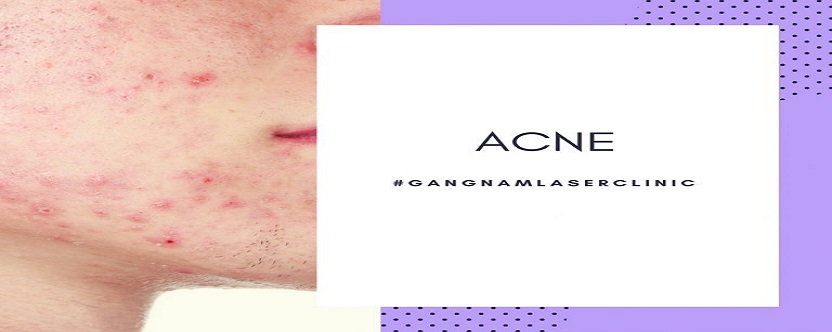
ACNE AND OILY SKIN: THE CAUSES, RISK FACTORS AND HOW TO EFFECTIVELY TREAT IT
What is Acne?
Acne, also known as Acne Vulgaris, is a chronic, inflammatory skin condition that causes spots, pimples, whiteheads, blackheads, papules, pustules nodules and cysts on the skin. It mostly occurs on the face, but can also occur on the back, chest, shoulders and upper arms. It is one of the common skin diseases, affecting teenagers and middle-aged individuals, especially males. Research shows that acne affects 3 in every 4 people aged 11 to 30 years.
Some causes of acne include genetics, menstrual cycle, anxiety and stress, hot and humid weather, using oil-based makeup, and squeezing pimples.
Nonetheless, today various effective treatment options are available for acne and scarring, from drugs to laser treatment to small pain-free procedures like subcision and microneedling.
How Does Acne Develop?
There are four basic mechanisms involved in the development of acne:
- The hair follicles in the skin become blocked with numerous dead cells, oil and bacteria. These cells combine with a substance called sebum, an oily secretion that lubricates the hair and skin, creating a plug in the follicle.
- The glands that produce sebum are known as sebaceous glands. They enlarge during the onset of puberty and the sebum production increases.
- The increase in sebum production allows for the overgrowth of bacteria called Cutibacterium (previously known as Propionibacterium) which is a part of the normal skin flora.
- Inflammation occurs as a result of the bacterial overgrowth due to multiple factors. This can lead to the rupture of the follicle and the formation of a red tender pimple, blackheads or whiteheads.
Risk Factors For Developing Acne

There are many myths regarding what contributes towards acne. Many people believe that foods, such as chocolate, milk or French fries aggravate acne. While there’s no scientific evidence to support these claims, there are certain risk factors for developing acne. These include:
- Hormonal changes, such as during puberty or pregnancy
- Medications, such as certain birth control pills or corticosteroids
- Certain medical conditions like Polycystic ovarian syndrome (PCOs) in women
- Diet high in refined sugars or carbohydrates, such as bread and chips
- External factors like using excessive oil-based cosmetics or sweaty, humid conditions
- Having a genetic disposition for acne
- Psychological stress
Treatment of Acne
Acne medications work by reducing sebum production and swelling or by treating the underlying bacterial infection. These can be achieved by:
- Topical Medications. The most common topical prescription medications for acne are:
- Retinoids and Retinoid-like Drugs. These are drugs which contain Retinoic acids or Retinoid and are often useful for moderate acne. They come in creams, gels and lotions.
- Antibiotics. Antibiotics work by killing excess skin bacteria and reducing redness and inflammation of the skin.
- Oral Medications. The most commonly used oral medications are:
- For moderate to severe acne, oral antibiotics are used to reduce bacteria. Usually the first choice for treating acne is a Tetracycline (Minocycline, Doxycycline) or a Macrolide (Erythromycin)
- Combined Oral Contraceptives. These are approved by the FDA for acne therapy in women who also wish to use them for contraception.
- Isotretinoin. Isotretinoin, also known as, Amnesteem is a derivative of vitamin A. It may be prescribed for people whose moderate or severe acne hasn’t responded to other forms of treatments.
- Cortisone injections may be used if the acne consists of large cysts or nodules. Cortisone is a steroid naturally produced by the body which reduces inflammation and speed healing.
- Therapies: For some people, the following therapies might be helpful for acne scarring, either alone or in combination with medications.
- Laser Therapy: uses medication and a special light called laser to reduce oil production and bacteria. Laser treatments are a simple, straightforward, and efficient method available today for severe acne. They are very effective and results can be seen with no risk to the health at all.
- Chemical Peel: This involves the application of a chemical solution, such as Salicylic acid or Glycolic acid directly on the skin. It is recommended for mild acne and scarring. The chemicals penetrate the epidermis and exfoliate the top layer of skin when removed, reducing fine lines and dark complexion.
- Dermabrasion: Removes the top layer of the skin with a rotating brush and is ideal for treating acne scarring. Microdermabrasion is a mild treatment that helps remove dead skin cells.
- Microneedling: This procedure helps to stimulate collagen production in the skin and lessens the appearance of scars.
- Subcision: It is a procedure where deep scars are treated with needles of varying sizes. These needles have blade-like ends to cut the fibrous bands, hence freeing the skin from deep puckered indents.





